Meyer Circle Sea Horse Fountain
Introduction
Text-to-speech Audio
Dedicated in 1925, the Meyer Circle Sea Horse Fountain is one of Kansas City’s most iconic landmarks. Architect Edward Buehler Delk designed the fountain, which originally featured a 17th-century sea horse sculpture from Venice that was purchased by real estate developer J.C. Nichols during one of his trips to Europe. Nichols donated the statuary to the city to adorn the large traffic circle as the construction of Ward Parkway moved south alongside some of the residential neighborhoods his company was building in that era. The 30-foot marble fountain piece was later replaced with a sandstone replica in 1992. The fountain was deemed inoperable in 2015, area residents donated hundreds of thousands of dollars for needed repairs and the fountain was rededicated in October 2017.
Images
The fountain is located at the intersection of one of Kansas City’s most historically significant streets and sees nearly 40,000 automobiles daily.
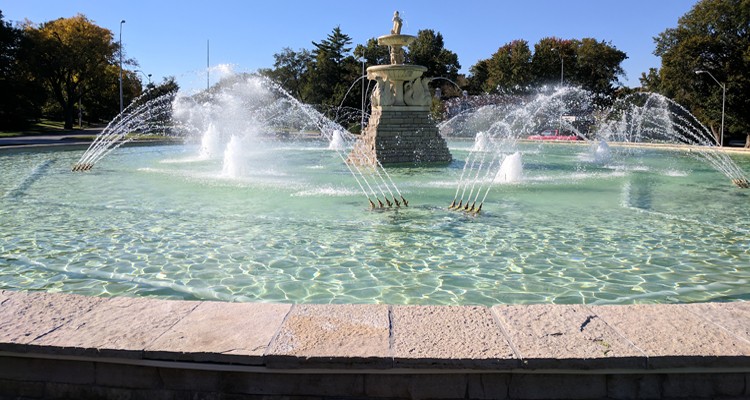
A view of the statuary of the Meyer Circle Sea Horse Fountain.
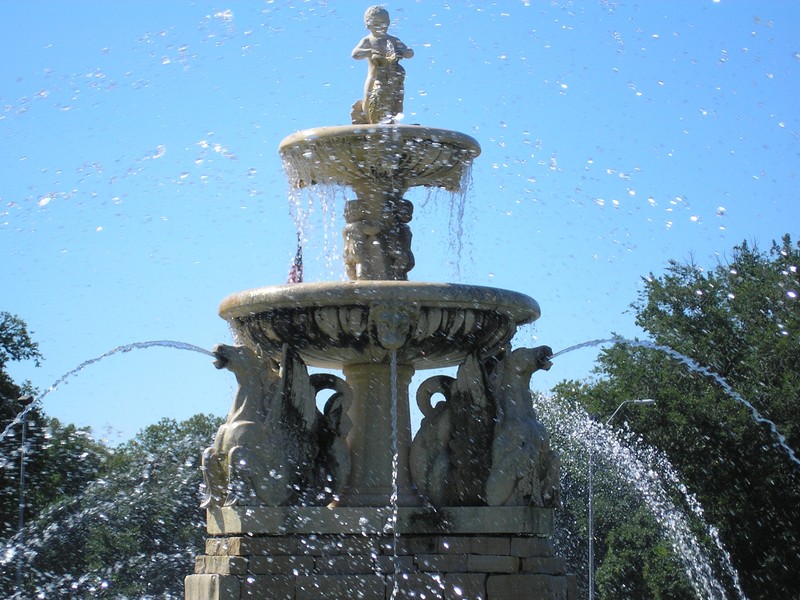
The Meyer Circle Sea Horse Fountain is located in the middle of the large traffic circle at Meyer Boulevard and historic Ward Parkway.
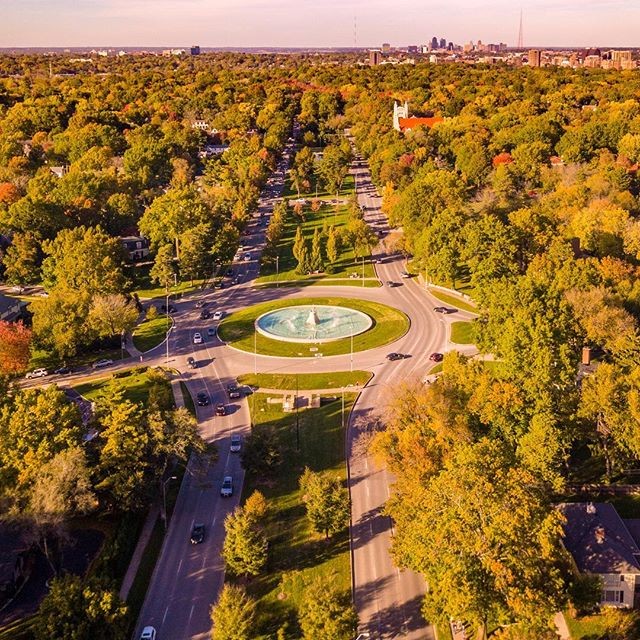
The Meyer Circle Sea Horse Fountain lights up at night.
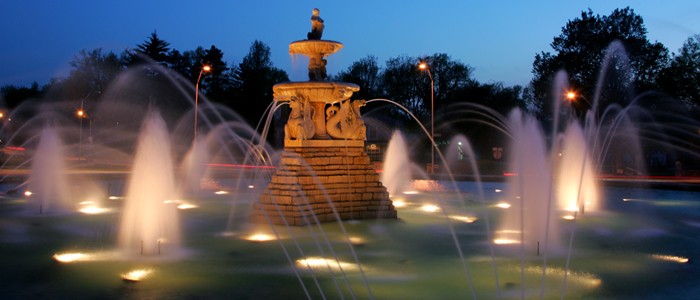
An up close view shows the detail of the Meyer Circle Sea Horse Fountain while turned off.
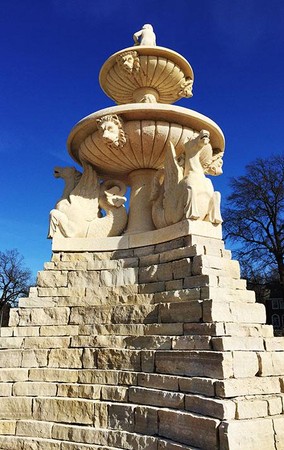
A young girl sits near the Meyer Circle Sea Horse Fountain c.1932. Courtesy of Missouri Valley Special Collections, Kansas City Public Library, Kansas City, Missouri.
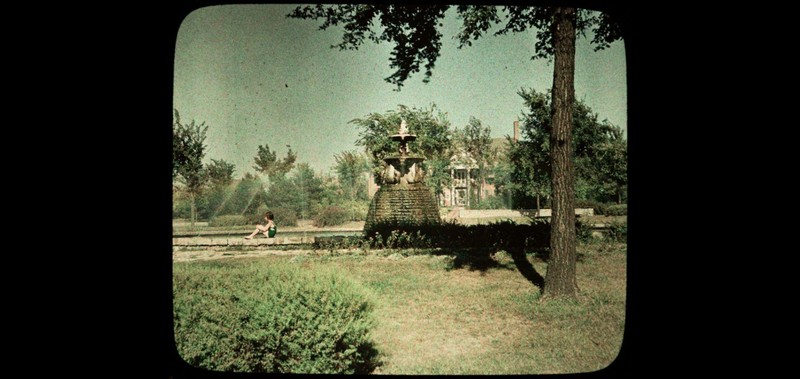
The Meyer Circle Sea Horse Fountain lost it's top statue during vandalism in 1961, as seen here c.1965. Courtesy of Missouri Valley Special Collections, Kansas City Public Library, Kansas City, Missouri.
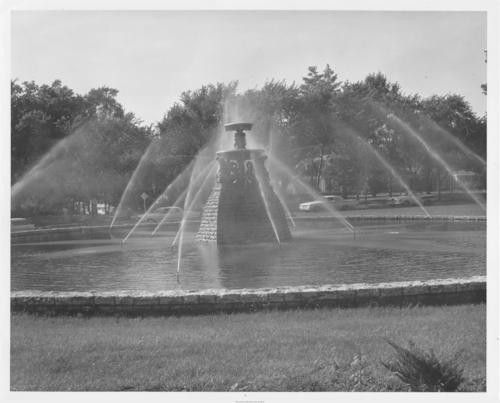
August Meyer was appointed as the first President of the board of parks commissioners. Courtesy of Missouri Valley Special Collections, Kansas City Public Library, Kansas City, Missouri.
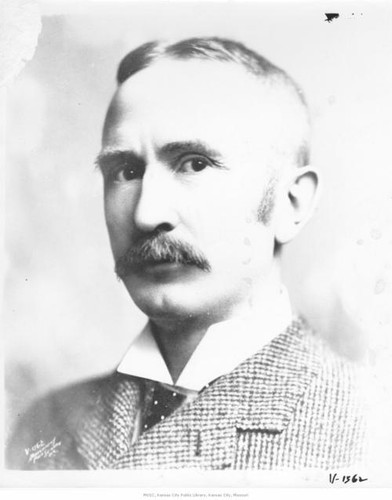
Real estate developer J.C. Nichols donated the original marble sea horse sculpture for use in this now-iconic fountain.
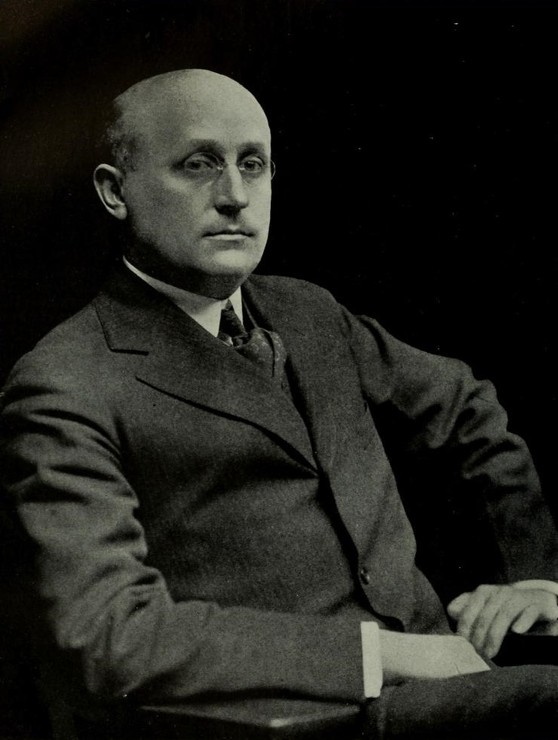
Architect Edward Buehler Delk designed the Meyer Circle Sea Horse Fountain. Courtesy of Missouri Valley Special Collections, Kansas City Public Library, Kansas City, Missouri.
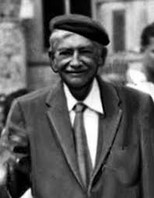
Backstory and Context
Text-to-speech Audio
In the early 1920s, during a trip to Italy, real estate developer J.C. Nichols purchased the Carrara marble sea horse sculpture that now adorns this traffic circle fountain. Prior to its move to Kansas City, it had been located in Venice for three centuries. The acquisition reflects the ambition of Nichols for the suburban neighborhoods along Ward Parkway, as well as the continued emphasis on developing parkways throughout Kansas City during this era.
Kansas City’s Parks and Boulevards System was built through the early 1900s. As the city limits expanded south. Nichols was buying land and developing suburban neighborhoods. He proposed extending Ward Parkway, and once the thoroughfare was completed to Meyer Boulevard, Nichols donated the sculpture and hired the prominent architect Edward Buehler Delk to incorporate it into the traffic circle's fountain.
Delk designed the iconic fountain featuring the mythological sea horses. Commonly referred to as hippocampus in Greek mythology, these sea horses feature the head of a horse (‘hippos’), the tail of a serpent (‘kampos’ meaning ‘sea monster’), the body of a fish, webbed feet, and a set of wings, which are thought to have made them swim faster. Hippocampi were often ridden by other sea creatures and associated with the Greek god of the sea, Poseidon, as they pulled his chariot. The grand sea horse sculpture is centered in the middle of an 80-foot, circular limestone pool, resting on a triangular stone pyramid. The fountain features two fluted saucers with carved lion heads and three cherubs that hold up the smaller saucer, which is topped by another cherub holding a fish. Water spouts out of the mouth of each sea horse and lion.
Due to vandalism in the early 1960s, the Park Board had to replace the top figure, originally a child riding a dolphin. By 1991, the marble fountain had deteriorated, so it was removed and replaced with a sandstone replica the following year. The lighting was also improved at that time, including the addition of fiber optics. The fountain became inoperable in 2015 after flooding in the electrical vault, in which the electrical system, pump room, and the vault itself needed to be replaced. Funding from the City of Fountains Foundation and a successful $600,000 bi-state fundraising effort led by retired businessman David Fowler made the restoration possible. The remaining funds from the effort created an endowment for the fountain for future maintenance and repairs. After sitting dry for two years, the fountain was re-dedicated on October 25, 2017.
The namesake of Meyer Boulevard, August Meyer (1851-1905) was the president of Kansas City’s first board of parks commissioners. He was born in St. Louis, Missouri but at the age of 14 was sent by his German parents to study abroad. He studied mining engineering in Zurich, Switzerland, graduated from the School of Mines in Freiburg, Germany in 1872, and later studied further in Berlin, Germany. By 1874 he moved back to the states. He landed in Colorado working at a government assaying post before becoming senior partner at A. R. Meyer and Company. He operated an ore-crushing mill and founded a smelting company, becoming president of the Meyer Mining Company. In 1881 as Kansas City became a major rail hub and industry was booming, Meyer moved his headquarters and purchased a small smelting plant which was later reincorporated as the United States Zinc and Chemical Company. When Kansas City’s first Park Board was established in 1892, Meyer was appointed President due to his experience in engineering and travels in Europe. Under Meyer’s leadership, the Parks and Boulevards System was created, and many of the main features of that system continue to shape the city today.
Ward Parkway was designed by premier landscape architect George Kessler in 1913 as part of the Parks and Boulevard System. Kansas City built numerous parks and landscapes in the late 19th and early 20th century, an effort that reflected the City Beautiful Movement, where leading American cities invested in public parks, civic buildings, and landscapes along their major thoroughfares.
Ward Parkway follows the natural path of the terrain, starting at the east end of the Country Club Plaza shopping district, then curving west-southwest and traveling south to around 92nd Street before making a final curve and ending at Wornall Road. The 12-mile stretch of parkway features a wide median full of landscaped green space, fountains, and statuary lined with historic properties. In 2012, the American Planning Association designated Ward Parkway as one of ten ‘Great Streets’ for exemplifying exceptional character.
The parkway is named in honor of Seth Ward (1820-1903), who made his initial fortune as a merchant along the frontier trails of the America West before investing in real estate. In 1871, he purchased 212 acres of property near the Kansas-Missouri border just south of Westport. Years later, he purchased another 180 acres. As the Parks and Boulevard System was being built, real estate developer J.C. Nichols purchased Ward's property and other parcels to the south and developed residential neighborhoods, including the Country Club District.
The Nichols Investment Company and Hugh Ward, son of Seth Ward, proposed the extension of the parkway as the city’s southern boundary reached 79th Street. They also acquired additional land and donated it to the city for the expansion. Named in Seth Ward’s honor for his contributions to the city's economy, Ward Parkway was one of the first major parkways in the system and connected to other major thoroughfares.
Today, the neighborhoods surrounding the fountain are known for their beauty, but also the restrictive covenants Nichols included in deeds that prevented African American and Jewish families from purchasing or renting property. Banks followed suit with similar lending practices that limited the diversity of suburban Kansas City in ways that mirrored residential segregation in hundreds of other communities. Following the 1948 Supreme Court case Shelley v. Kraemer, restrictive covenants have been legally unenforceable, yet the demographic patterns of these and many other suburban neighborhoods remain similar to the early 20th century.
Cite This Entry
Stahly, Nichole and Clio Admin. "Meyer Circle Sea Horse Fountain." Clio: Your Guide to History. December 23, 2023. Accessed March 21, 2025. https://theclio.com/tour/2255/28
Sources
Meyer Circle Sea Horse Fountain, City of Fountains. Accessed July 22nd 2022. https://cityoffountains.org/repairs-and-renovation-meyer-circle/.
Haskell, Harry. City of the Future: Kansas City's Progressive Utopia, State Historical Society of Missouri. April 10th 2008. Accessed July 22nd 2022. https://shsmo.org/sites/default/files/pdfs/kansas-city/kimball/Haskell-2008-04-10.pdf.
Nichols, Jesse Clyde. JESSE CLYDE NICHOLS (1880-1950) Memoir, State Historical Society of Missouri. Accessed July 22nd 2022. https://files.shsmo.org/manuscripts/kansas-city/nichols/JCN087.pdf.
Pepitone, John. Money Flows to Make Meyer Circle Fountain Bubble Again, Fox 4 KC. July 12th 2017. Accessed July 22nd 2022. https://fox4kc.com/news/money-flows-to-make-meyer-circle-fountain-bubble-again/.
Paxton, Heather N.. Fountains in Our Town - The Meyer Circle Sea Horse Fountain, The Independent. August 20th 2020. Accessed July 22nd 2022. https://kcindependent.com/fountains-in-our-town-the-meyer-circle-sea-horse-fountain/.
Euston, Diane. August R. Meyer: The Father of the Parks and Boulevard System, Martin City Telegraph. October 13th 2019. Accessed July 22nd 2022. https://martincitytelegraph.com/2019/10/13/august-r-meyer-father-of-the-parks-and-boulevard-system/.
National Register of Historic Places Inventory - Nomination Form: Meyer, August House, National Archives. Accessed July 22nd 2022. https://catalog.archives.gov/OpaAPI/media/63819250/content/electronic-records/rg-079/NPS_MO/82003146.pdf.
National Register of Historic Places - Nomination Form: Ward, Seth E., Homestead; Ward House , Missouri State Parks. Accessed July 22nd 2022. https://mostateparks.com/sites/mostateparks/files/Ward%2C%20Seth%20E.%20Homestead.pdf.
Rhys, Dani. The Hippocampus – Greek Sea Creature, Symbol Sage. Accessed July 22nd 2022. https://symbolsage.com/hippocampus-greek-sea-creature/.
https://kcparks.org/places/sea-horse-fountain-2/
https://cityoffountains.org/repairs-and-renovation-meyer-circle/
https://kcparks.org/one-final-shot-of-meyer-circle-sea-horse-fountain-before-it-is-turned-off-for-the-season-photo-via-drone-on-demand-uas4aec-cityoffountains-kcparks-winteriscoming-droneoftheday-dronephotography/
https://kcparks.org/about-fountains/city-of-fountains-foundation/
https://www.walterpmoore.com/helping-meyer-circle-fountain-flow-again
https://kchistory.org/image/fountain-meyer-circle
https://kchistory.org/image/meyer-circle-fountain-0
https://kchistory.org/image/august-r-meyer
https://en.wikipedia.org/wiki/J._C._Nichols
https://kchistory.org/document/biography-edward-buehler-delk-1885-1956-architect

